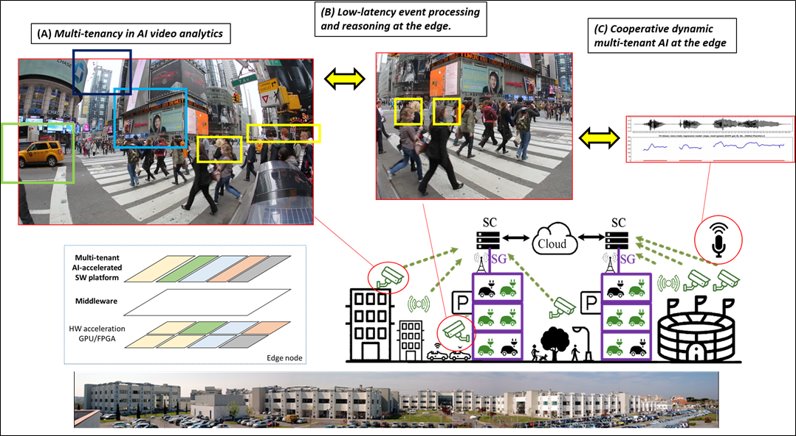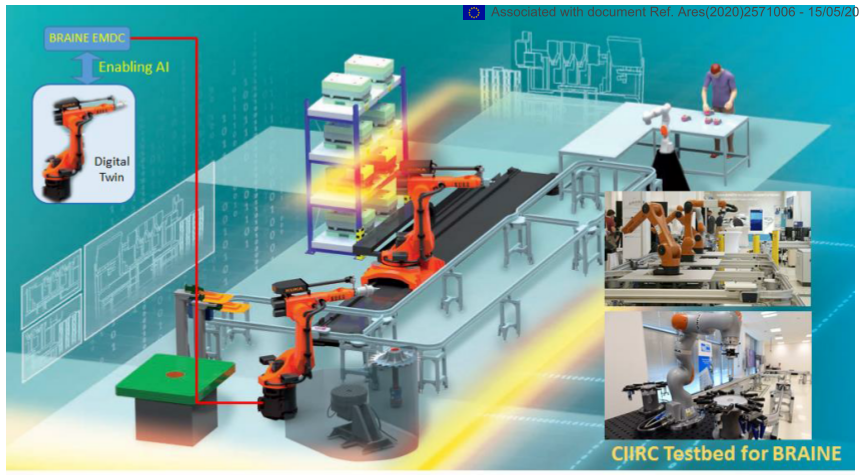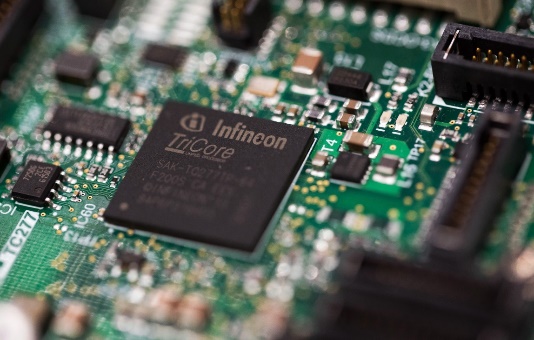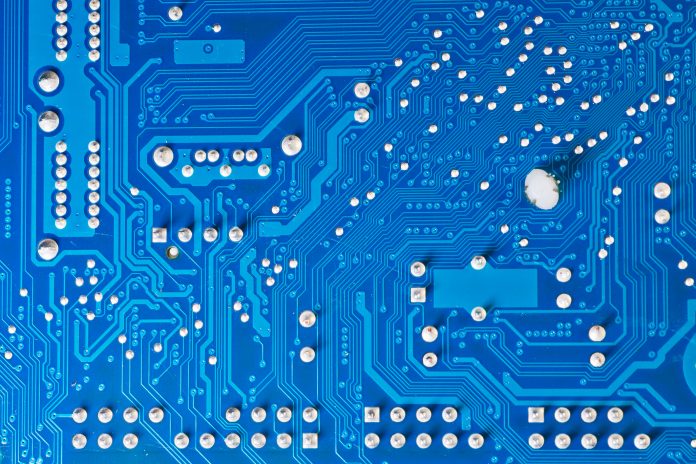The BRAINE project will help to position Europe at the forefront of the intelligent edge computing field
Edge computing is an exciting new approach to network architecture that leaves behind cloud computing and places the intelligence for processing data closer to the sources. Inherently, this offers many technical advantages, such as reduced latency, secure decentralised processing and storage, scalability at lower complexity, versatility to adapt the nodes to the underlying application to be serviced, and increased reliability.
Edge computing can dramatically boost services and applications by supporting Artificial Intelligence (AI) natively, instead of relying on AI in the cloud. Edge computing supporting AI (without cloud intervention) is the key technology that will enable many long-awaited game changers such as:
- Factory 4.0 and smart manufacturing.
- 5G.
- Internet-of-things.
- Self-driving vehicles.
- Remote robotics for healthcare.
- Machine vision.
Introducing AI to edge computing is challenging. Specific power-efficient hardware needs to be developed with a secure software infrastructure specifically designed with big data processing and AI in mind.


The BRAINE project’s overall aim is to boost the development of the Edge framework and, specifically, energy-efficient hardware and AI-empowered software systems, capable of processing Big Data at the Edge, supporting security, data privacy and sovereignty.
The BRAINE Project is partially funded by the ECSEL Joint Undertaking (JU) under grant agreement No 876967, supported by the European Union’s Horizon 2020 research and innovation programme. It started on May 1st 2020, with the duration of 36 months and overall budget of €16M.
BRAINE’s overall aim will be reached by targeting the following goals:
- Developing a heterogeneous, energy-efficient Edge Micro Data Center (EMDC) hardware solution that goes beyond the current hardware and software architectures and offers Big Data processing and AI capabilities at the Edge. BRAINE EMDC will be a functional eight-slot EMDC with an ad-on GPU. Hence, the Project has been working on innovative cooling systems, based on solid state and liquid approaches, mechanical systems to support highly dense EMDC in terms of components and BRAINE boards containing the composable building blocks (i.e., GPU, ASIC, FPGA, CPU, memory, programmable P4 switching). Overall, a fully loaded BRAINE EMDC is expected to consume only 1/3 of a standard 19-rack node, but with the computational power of eight standard rack size computers, consuming only up to 2kW.
- Devising an EMDC software infrastructure that offers control, computing, acceleration, storage, and 5G networking at the Edge and excels in scalability, agility, security, data privacy, and data sovereignty in Big Data and AI for low latency and mission-critical applications. The EMDC software infrastructure exploits and enhances the Kubernetes orchestration system, and it provides specifically designed components like Resource & Service Repository, Service Register, Service Manager, SLA Broker, Telemetry system, etc.
- Developing a future-proof Edge security framework and associated infrastructure based on the latest software and hardware security technologies. The project is developing in- network firewalling technologies based on programmable Ethernet switches/ smartNICs, CPU offloading of IPSec and transport security layer (TLS) protocols in smartNICs, post-quantum security solutions, and cryptographic acceleration for in fibre-based connectivity links for edge nodes.




The BRAINE approach is based on creating a seamless Edge by building clusters of nodes, forming an Edge MicroDataCenter (EMDC), along with smart network interface cards (NIC) capable of pairing with Edge devices to enable high-speed connectivity and native AI.
BRAINE provides a new vision for utilising edge resources by providing novel network-edge workload distribution schemes. Predicting resource availability and workload demand, identifying trends, and taking proactive actions are all aspects of the novel workload distribution. The workload distribution technology developed in the context of BRAINE can be transferred to many other edge/fog computing environments to achieve different goals. Last but not least, BRAINE will have an important positive impact on the environment. Through BRAINE, edge computing can reduce this projected energy consumption by offloading many of the AI functions next to the end-users.
BRAINE will demonstrate edge computing enabling AI through four use cases:
- Healthcare assisted living (case 1). New AI-based Digital Twin technology will run in the BRAINE EMDC platform as part of a powerful Healthcare Assisted Living software. The goal is to efficiently provide decentralised medical services that are secure, reliable, GDPR compliant, and cost-effective for a wide range of healthcare, caregiving, health insurance organisations and various patients in the EU.
- Hyperconnected smart city (case 2). The goal is to create a distributed federated infrastructure for multi-tenancy leveraging on the powerful EMDC acceleration capabilities, capable of serving video-enabled hyper-connectivity in terms of large video processing, latency, machine learning, security, GDPR, and data sovereignty in a city.
- Robotics in Factory 4.0 (case 3). The Project will create digital twins and a multiagent system for Factory 4.0 production lines, where digital copies of the production line robots are simulated through AI, and production is planned at the edge node. This allows for lower (de)commissioning time, new robot introduction, and good performance tracking, as sensors in the real robot feed the agents and digital twin, thereby allowing to predict failures, make real-time adjustments and optimisation in individual robots and groups of collaborative robots.
- Supply chain Industry 4.0 (case 4). The BRAINE EMDC will provide a federated distributed platform as an appliance enabling the deployment of big data and AI tools complementing the Arrowhead initiatives, Europe’s largest project providing engineering processes, integration platform, tools and toolchains for the cost-efficient development of digitalisation, connectivity and automation system solutions in various fields of industrial applications.
Through the achievement of its goals, the BRAINE project will help to position Europe at the forefront of the intelligent edge computing field, enabling growth across many sectors (manufacturing, smart healthcare, surveillance, satellite navigation, and others). By lowering the barriers for utilising edge computing for artificial intelligence applications, BRAINE will open the door for European SMEs to leverage state of the art technologies, driving their development and growth as industry leaders in their sectors.

BRAINE has received funding from the European Union’s HORIZON 2020 Research programme under the Grant Agreement no. 876967.
Please note: This is a commercial profile











